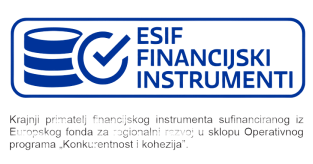

This deep dive separates verified data from hype so you can decide whether plant or plastic leather earns space in your wardrobe.
Marketing slogans rarely mention fossil feedstocks or fibre shed. Let us fill those blanks.
What vegan leather actually means
Vegan leather covers any hide-free sheet that looks and performs like animal leather. It spans three main groups: petroleum synthetics like polyurethane and PVC, bio-based hybrids such as cactus or spent-grain sheets blended with bio PU, and fully plastic-free newcomers grown from mycelium or bacterial cellulose.
Key takeaway, vegan says nothing about carbon or toxicity, it only guarantees zero animal content.
Carbon footprint comparison
Multiple LCAs place chrome-tanned cowhide at around 110 kg CO₂e per square metre, largely driven by methane from cattle.
By contrast, water based PU vegan leather ranges from 10 to 20 kg CO₂e, while waste-based hybrids like Beer Skin™ can dip to 6-12 kg according to unpublished third-party audits.
Key takeaway, most vegan leathers cut carbon dramatically, but exact savings hinge on binder chemistry and electricity mix.
Allocation matters
Switching the economic allocation of hide in one study from 1.8 percent to 3.5 percent shifted carbon results 30 percent.
Key takeaway, methodology tweaks can swing numbers, always check how an LCA assigns impacts.
Microplastics, the invisible hitchhiker
PU and PVC vegan leathers are plastic films. They can shed microparticles during abrasion, transit, or washing. One lab test found that a PU jacket released up to 1 200 microfibres per cycle in a domestic washer. These fragments persist in waterways, enter food chains and may carry additives such as PFAS reported in some vegan coatings.
Key takeaway, synthetic vegan leather solves animal issues but introduces microplastic questions.
Tackling fibre shed
Switch to water based PU, which forms stronger bonds and reduces surface flaking.
Choose textured finishes over high gloss, smoother films tend to chip less.
Wash infrequently and use laundry bags that trap microfibres.
Key takeaway, user habits and manufacturing upgrades both lower fibre pollution.
VOCs and toxic solvents
Traditional PU leather uses dimethylformamide (DMF) and toluene during coating. Water based PU eliminates roughly 90 percent of these volatile organic compounds, cutting factory emissions and worker risk.
Key takeaway, verify “DMF-free” or “water based” labels, they slash toxins compared with solvent routes.
Bio content, green cushion or greenwash
Some brands tout “plant PU” yet hide the percentage of renewable feedstock. Real figures range from 10 percent to more than 70 percent in next-gen systems like corn-sugar urethanes.
Key takeaway, insist on numbers, not adjectives, because a 10 percent bio coat is still 90 percent fossil.
Plastic-free frontiers
Imperial College researchers engineered bacteria that spin cellulose and pigment simultaneously, yielding a self-dyed sheet with zero polyurethane. While promising, the material still sits at pilot scale with durability testing ongoing.
Key takeaway, plastic-free vegan leather exists, but availability remains limited and price high.
End of life realities
Most coated textiles head to landfill or energy recovery. Chemical recycling can depolymerise PU back to polyols, yet industrial rollout is in its infancy. Mechanical shredding downcycles sheets into padding with lower value.
Key takeaway, wearing pieces longer is the strongest sustainability lever until true closed loops scale.
Repair and care for longevity
A conditioner specifically designed for PU keeps films flexible, but avoid silicone sprays that seal pores and accelerate cracking. For detailed how-tos, follow our cleaning playbook in Clean faux PU and vegan leather where we outline solvent-free stain removal and patch kits.
Key takeaway, simple monthly maintenance can double vegan leather lifespan and slash replacement emissions.

Myths, claims, and marketing traps
Claim | Reality |
|---|---|
Vegan leather is biodegradable | Most PU blends are not, unless certified compostable binders replace fossil PU. |
Plastic-free equals fragile | Mycelium foams hit suede-level abrasion scores, but data is still sparse. |
Animal leather is always a by-product | Hide value influences slaughter economics, raising ethical concerns. |
Key takeaway, scrutinise the chemistry behind the slogan to know what you are buying.
Quick quiz to gauge material fit
Do you need extreme abrasion resistance for work boots? Cowhide still wins.
Are you designing lightweight bags? A cactus or beer-grain hybrid cuts weight and carbon.
Is price the top concern? Recycled PU offers affordability with moderate impact reduction.
Key takeaway, align material choice with performance needs and ethical stance.
Deepen your sustainable savvy
Explore chemistry and impact differences between PU, faux, and vegan options in Faux vs Vegan vs PU leather so you can inspect hang-tags like a pro.
Learn how barley waste becomes bags in Brew to Bag beer leather lifecycle, a practical case for closing industrial loops.
For a buffet of plant options from pineapple to mushroom read Plant based leather 7 waste born alternatives to see who is pushing binder innovation.
Macro numbers across textiles appear in Impact of sustainable materials on the environment, ideal if you want bigger context.
Finally, if you fancy crafting your own vegan accessories, download patterns in DIY plant based leather projects and put scrap to stylish use.
Designer checklist for genuine sustainability
Request full LCA with goal and scope defined.
Verify bio content by weight, not just binder fraction.
Confirm solvent type, water and DMF status.
Ask about microfibre shed tests and composting potential.
Plan for take-back or repair channels from day one.
Key takeaway, sustainability lives in supply chain transparency and end-of-life plans, not just feedstock origin.

Consumer cheat sheet
Look for water based, DMF-free logos.
Seek certifications like USDA BioPreferred or OEKO-TEX Standard 100.
Choose timeless colours and cuts, then care diligently.
Support brands offering recycling or refurbishment.
Question any claim that lacks numbers or third-party proof.
Key takeaway, informed shoppers push brands toward real, measurable progress.
FAQs
Is vegan leather always plastic? No, plastic-free mycelium, cork, and bacterial cellulose exist, but many mainstream items use PU.
Can vegan leather crack faster than cowhide? Entry-level sheets may, premium water based PU and bio blends pass 30 000 abrasion cycles comparable to mid-grade hide.
Does vegan leather smell synthetic? High quality water based coatings emit minimal odour after curing.
Are microplastics inevitable? Lower, not eliminate, shed by choosing tighter coatings, washing less, and using capture bags.
Will vegan leather prices drop? Scale and improved bio-chemistry are narrowing gaps each season.
Key takeaway, the tech curve bends toward better performance and lower costs year over year.
Conclusion
Vegan leather delivers strong carbon and cruelty wins, yet its ultimate sustainability depends on binder chemistry, microplastic management, and credible cradle-to-grave plans. Choose water based or high bio content coatings, ask for LCAs, and care attentively to keep your cruelty-free pieces earning wardrobe mileage with a lighter footprint.
Key takeaway, sustainability is not a label, it is a sum of verified choices from factory to laundry basket.






.png&w=3840&q=75)








